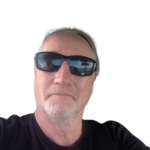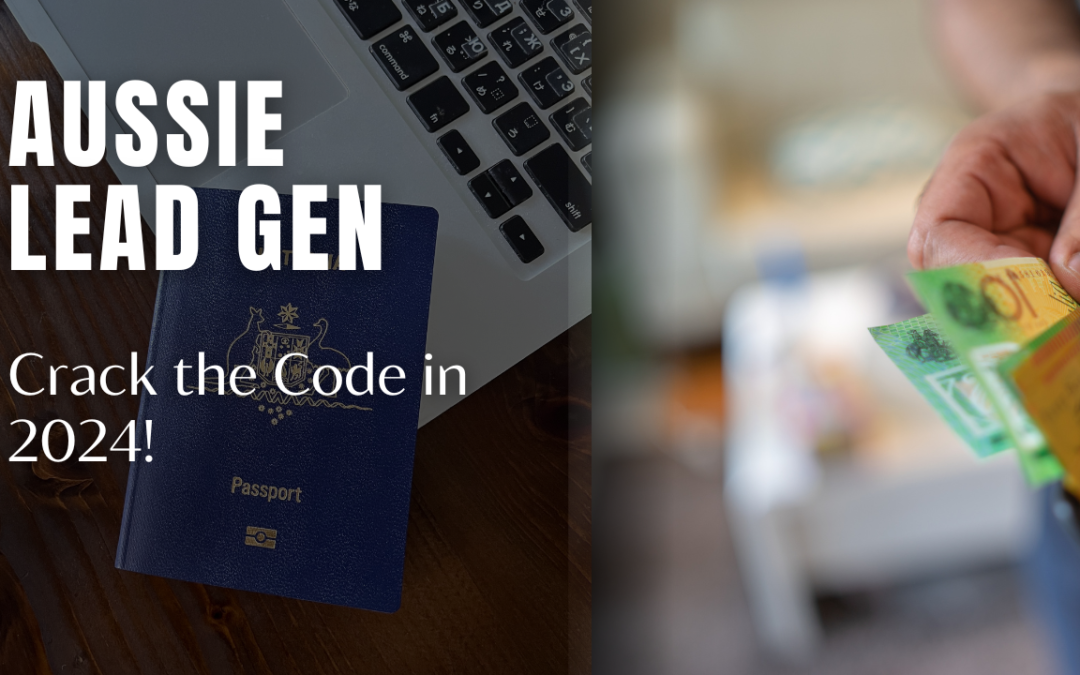
Launch a Product Line on a Budget – Startup Marketing Strategies
The Outback Challenge
Imagine you’re standing in the vast Australian Outback. The sun is beating down, you’re miles from anywhere, and you have a brilliant idea – a revolutionary new kind of water bottle that filters water as you drink, perfect for adventurers and eco-conscious folks alike. You’ve poured your heart, soul, and savings into developing this product, but there’s one tiny problem: your marketing budget is smaller than a quokka’s backpack.
This, my friends, is the reality for many Aussie startups. You’ve got a killer product, but getting it noticed in a crowded marketplace feels like finding a specific grain of sand on Bondi Beach. Launching a new product line, especially in today’s competitive landscape, is tough. According to recent data, approximately 60% of Australian startups fail within their first three years, and a significant portion of that is often attributed to ineffective or insufficient marketing (Australian Bureau of Statistics, 2024). But don’t despair! You don’t need a Crocodile Dundee-sized budget to make a splash.
This article is your survival guide to launching a new product line on a budget. We’re not talking about generic advice you’ve read a million times. We’re diving deep into affordable, practical marketing strategies that actually work, specifically tailored for the unique challenges and opportunities of the Australian startup scene.
I. Understanding Your Target Audience – Know Thy Customer (Before You Spend a Cent)
Before you even think about logos or social media, you need to get inside the heads of your potential customers. This isn’t about broad strokes; it’s about laser-focused precision.
A. Deep Dive into Customer Personas – More Than Just Demographics
Forget just age and location. You need to build detailed customer personas that are so real, you could almost have a barbie with them.
1. Demographics, Psychographics, Pain Points, Aspirations: The Full Picture
- Demographics: Age, gender, location, income, education – the basic stuff.
- Psychographics: Lifestyle, values, interests, attitudes, personality traits. What makes them tick? Are they environmentally conscious? Do they value convenience over price?
Check our blogs: “Understanding Buyer Intent Keywords and Their Uses for Higher Conversions”
“Emotional Marketing: The Key to Unlocking Consumer Hearts & Wallets” - Pain Points: What problems are they trying to solve? What are their frustrations? Perhaps they’re tired of lugging around heavy water filters, or they’re worried about the environmental impact of plastic bottles.
- Aspirations: What are their goals and dreams? Do they want to travel the world? Do they want to live a more sustainable life?
2. Where Do They Hang Out Online and Offline?
Are they glued to Instagram, scrolling through foodie pics and fitness influencers? Or are they more likely to be found on LinkedIn, networking with industry professionals? Maybe they’re avid readers of specific blogs or members of niche online forums. Offline, do they frequent farmers’ markets, gyms, or outdoor adventure stores? Knowing their digital and physical haunts is key to reaching them effectively.
B. Market Research on a Shoestring – Free Tools are Your Friends
Market research doesn’t have to involve expensive consultants. You can be your own data detective.
1. Leveraging Free Tools: Google is Your Best Mate
- Google Trends: See what people are searching for. Are they looking for “sustainable water bottles” or “eco-friendly hydration”? This can reveal emerging trends and keyword opportunities. You can even narrow it down to Australia.
- Social Media Analytics: Most platforms offer free insights into your audience’s demographics, interests, and engagement patterns.
- AnswerThePublic: Free tool showing hundreds of questions asked online in any niche, country, or language, find what your target market wants to know.
2. Analyzing Competitors – Learn from Their Wins and Mistakes
- Website Audit: What keywords are they targeting? What kind of content are they creating? Free Tool: Ubersuggest
- Social Media Stalking (the ethical kind): What’s their engagement like? What type of posts resonate with their audience?
- Customer Reviews: What are people saying about their products and services?
3. Surveys and Feedback – Simple, Yet Powerful
- Google Forms: Create simple surveys to gather feedback from your existing network or potential customers.
- Social Media Polls: A quick and easy way to gauge interest and preferences.
- Email outreach: Send personal emails asking specific customers how they use your product.
III. Building a Strong Online Presence – Your Digital Shopfront
In today’s digital age, your online presence is often the first impression you make.
A. Website Optimisation for Lead Generation – Make it Count
Your website is more than just a pretty face; it’s a lead-generating machine.
1. Essential Elements of a Startup-Friendly Website
- Clear Value Proposition: What problem do you solve? Why should people care?
- User-Friendly Design: Easy navigation, mobile responsiveness, fast loading speed.
- Compelling Visuals: High-quality product images and videos.
- Testimonials and Social Proof: Build trust and credibility.
2. SEO Basics for Beginners – Speak Google’s Language
- Keyword Research: Identify relevant keywords that your target audience is searching for. Think long-tail keywords like “best water bottle for hiking in Australia.”
- On-Page Optimization: Use keywords in your page titles, headings, and content.
- Content is King: Create valuable content that answers your audience’s questions and addresses their needs.
- Backlinks: Get other websites to link to yours. This builds authority and improves your search ranking. Look for free opportunities like relevant industry directories. Free Tool: Ubersuggest
3. Call to Actions that Convert – Guide Your Visitors
Don’t leave your visitors hanging. Tell them what you want them to do.
- “Buy Now” buttons: Make it easy to purchase your product.
- “Sign Up for Our Newsletter” forms: Capture email addresses for future marketing.
- “Download Our Free Guide” buttons: Offer valuable content in exchange for contact information.
B. Content Marketing that Doesn’t Cost a Fortune – Educate and Entertain
Content marketing is about building relationships, not just pushing sales.
1. Blog Posts, Articles, and Guides; Become a Thought Leader
- Address customer pain points: Create content that solves their problems and answers their questions.
- Showcase your expertise: Share your knowledge and insights about your industry.
- Tell your brand story: Connect with your audience on an emotional level.
2. Repurposing Content Across Platforms: Work Smarter, Not Harder
- Turn a blog post into a series of social media posts.
- Create an infographic from a data-heavy article. Free Tool: Canva
- Record a podcast episode based on a popular blog post. Free Tool: Buzzsprout
3. Guest Blogging and Collaborations: Expand Your Reach
- Write articles for other websites in your industry. This exposes you to a new audience and builds backlinks.
- Partner with complementary businesses to create joint content or offer bundled promotions.
C. Social Media Marketing on a Budget – Be Social, Be Smart
Social media is a powerful tool for building brand awareness and engaging with your audience.
1. Choosing the Right Platforms: Don’t Spread Yourself Too Thin
Focus on the platforms where your target audience hangs out. Don’t waste time on platforms that aren’t relevant to your business.
2. Creating Engaging Content: Visuals, Videos, Stories
- High-quality product photos and videos.
- Behind-the-scenes glimpses of your business.
- User-generated content: encourage customers to share their experiences with your product.
- Stories: use Instagram and Facebook Stories to create interactive content and connect with your audience in real-time.
3. Building a Community: It’s a Two-Way Street
- Respond to comments and messages promptly.
- Run contests and giveaways to generate excitement.
- Ask questions and encourage interaction.
- Use relevant hashtags to expand your reach.
4. Utilising Free Social Media Management Tools
- Agorapulse (free plan; recommended): Schedule posts, monitor conversations, and track analytics.
- Buffer (free plan): Another great option for scheduling and managing social media content.
IV. Leveraging the Power of Free and Low-Cost Marketing Channels – Beyond the Usual Suspects
Think outside the box and explore these often-overlooked marketing avenues.
A. Email Marketing – The Unsung Hero of ROI
Email marketing is far from dead. It’s a direct line to your customers, and it boasts an impressive return on investment.
1. Building an Email List; It Starts with Permission
- Opt-in forms: Make it easy for people to subscribe to your newsletter. Free Tool: Jotform
- Lead magnets: Offer valuable incentives (e.g., e-books, discount codes, free samples) in exchange for email addresses.
- Contests and giveaways: Collect email addresses as part of the entry process. Free Tool: UpViral
2. Crafting Effective Email Campaigns – Don’t Be Spammy
- Personalisation: Use the subscriber’s name and tailor content to their interests.
- Segmentation: Divide your list into smaller groups based on demographics, interests, or purchase history.
- Compelling subject lines: Make them intriguing and relevant to entice people to open your emails.
- Clear call to action: Tell subscribers what you want them to do.
3. Automation for Efficiency: Set It and Forget It
- Welcome series: Introduce new subscribers to your brand and products.
- Abandoned cart emails: Remind customers about items they left in their shopping cart.
- Post-purchase follow-ups: Ask for feedback, offer support, and encourage repeat purchases. Free Tool: Mailerlite
B. Public Relations on a Budget – Get the Media Talking
PR isn’t just for big corporations. You can generate media coverage without a hefty PR agency fee.
1. Crafting Compelling Press Releases: Tell Your Story
- Focus on the newsworthiness of your product launch.
- Highlight the unique features and benefits.
- Include quotes from you or other key team members.
- Keep it concise and easy to read.
2. Targeting Relevant Media Outlets and Bloggers: Do Your Research
- Identify journalists and bloggers who cover your industry or niche.
- Read their work to understand their style and interests.
- Personalise your pitches and explain why your product is relevant to their audience.
3. Building Relationships with Journalists: Be Helpful, Not Pushy
- Follow journalists on social media and engage with their content.
- Offer to be a source for future articles.
- Use Qwoted (Help a Reporter Out): This free service connects journalists with sources.
C. Partnering Up for Success – Strength in Numbers
Collaboration can be a powerful marketing strategy, especially for startups on a budget.
1. Cross-Promotions with Complementary Businesses: Reach New Audiences
- Identify businesses that offer products or services that complement yours.
- Offer joint discounts or promotions.
- Co-host events or webinars.
- Promote each other on social media and email newsletters.
2. Affiliate Marketing: Pay Only for Results
- Partner with bloggers or influencers who will promote your product to their audience.
- You pay them a commission for each sale they generate.
3. Influencer Marketing: Micro-Influencers Pack a Punch
- Micro-influencers (those with smaller but highly engaged followings) can be more affordable and effective than big-name celebrities.
- Look for influencers whose audience aligns with your target market.
- Offer them free products or a small fee to create content about your product.
V. Launch Day Strategies – Making a Splash Without a Huge Spend
The big day is finally here! Here’s how to make the most of your launch without blowing your budget.
A. Creating Pre-Launch Buzz – Build Anticipation
- Teaser campaigns on social media: Share snippets of information about your product, behind-the-scenes glimpses of the development process, or countdown timers to the launch date.
- Early bird discounts and incentives: Offer special deals to customers who pre-order or sign up for your email list before the launch.
- Building an email list of interested customers: Use your website and social media channels to collect email addresses from people who want to be notified when your product is available.
B. Leveraging Social Media on Launch Day – Go Live and Get Interactive
- Live streams: Host a live Q&A session on Instagram or Facebook to answer questions about your product and generate excitement.
- Behind-the-scenes content: Show your followers what’s happening on launch day, from packing orders to celebrating with your team.
- User-generated content: Encourage customers to share photos and videos of themselves using your product.
- Paid social media ads: Consider running targeted ads on platforms like Facebook and Instagram to reach a wider audience. Start with a small budget and test different ad creatives and targeting options to see what works best.
C. Reaching Out to Your Network – Your First Customers
- Friends, family, and existing customers: Ask them to spread the word about your new product. They can be your most powerful advocates.
- Encouraging sharing and word-of-mouth marketing: Offer incentives for referrals, such as discounts or free gifts.
VI. Measuring and Optimising Your Marketing Efforts – Data is Your Friend
Don’t just set it and forget it. Track your results and make adjustments along the way.
A. Tracking Key Metrics – What’s Working, What’s Not
- Website traffic: How many people are visiting your website? Where are they coming from?
- Conversions: How many visitors are taking the desired action (e.g., making a purchase, signing up for your newsletter)?
- Social media engagement: How many likes, comments, and shares are your posts receiving?
- Email open and click-through rates: Are people opening your emails? Are they clicking on the links?
B. Using Free Analytics Tools – Google is Still Your Mate
- Google Analytics: A powerful tool for tracking website traffic, user behavior, and conversions.
- Social media insights: Most platforms offer built-in analytics dashboards that provide data on your audience and engagement.
C. Analysing Data and Making Adjustments: Be Agile
- Identify what’s working well and double down on those strategies.
- Identify what’s not working and either adjust or abandon those tactics.
- Don’t be afraid to experiment and try new things.
D. The Importance of A/B Testing
- Test different versions of your website copy, email subject lines, or social media ads to see which ones perform best.
- A/B testing can help you optimize your marketing efforts and improve your ROI.
VII. Embrace the Hustle
Launching a new product line on a startup budget is a challenge, but it’s absolutely achievable. By being creative, resourceful, and strategic, you can make a big impact without a big budget. Remember, marketing is an ongoing process, not a one-time event. Continuously measure, analyse, and optimise your efforts to ensure long-term success.
The Australian startup landscape is vibrant and full of potential. Embrace the spirit of innovation, leverage the power of affordable marketing, and go make your mark!
VIII. Bonus Section
A. Free Resources and Tools for Startup Marketing
- Canva: Free design tool for creating graphics, social media posts, and more.
- Mailerlite (free plan): Email marketing platform with automation features.
- Trello: Project management tool for organizing tasks and collaborating with your team.
B. Case Studies of Australian Startups that Successfully Launched Products on a Budget
- Research these for inspiration. Look for local success stories in your industry. Many founders are happy to share their experiences in interviews or blog posts.
C. Checklist for Launching a New Product Line
- Define your target audience.
- Conduct thorough market research.
- Develop a strong online presence.
- Create a content marketing strategy.
- Build an email list.
- Leverage free and low-cost marketing channels.
- Create pre-launch buzz.
- Execute a strategic launch day plan.
- Measure and optimise your efforts.
- Celebrate your successes!
References
- Australian Bureau of Statistics. (2023). 8165.0 Counts of Australian Businesses, including Entries and Exits, Jun 2019 to Jun 2023.
https://www.abs.gov.au/statistics/economy/business-indicators/counts-australian-businesses-including-entri es-and-exits/latest-release - Help A Reporter Out (HARO) –
www.helpareporter.com
I hopes this serves you 😀
The Motorcycling Marketer

If you need a helping hand this is where to find me: Hit me up at our Website or Social Handles 👇👇



 Red/ Marketer with a Soul
Red/ Marketer with a Soul









